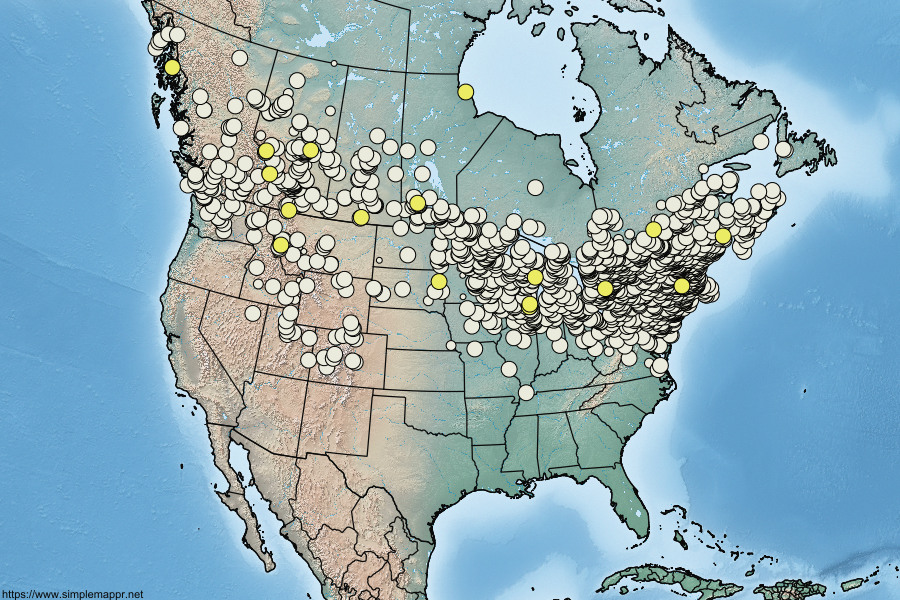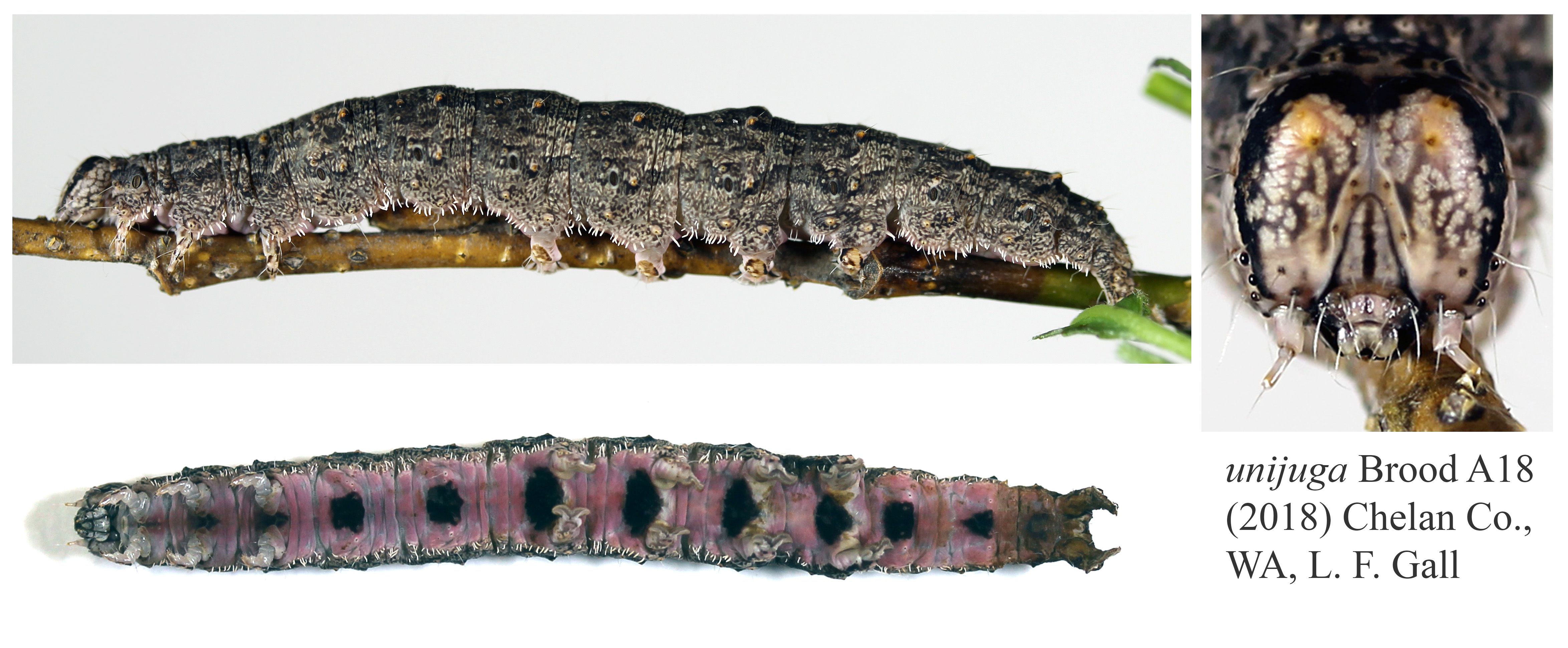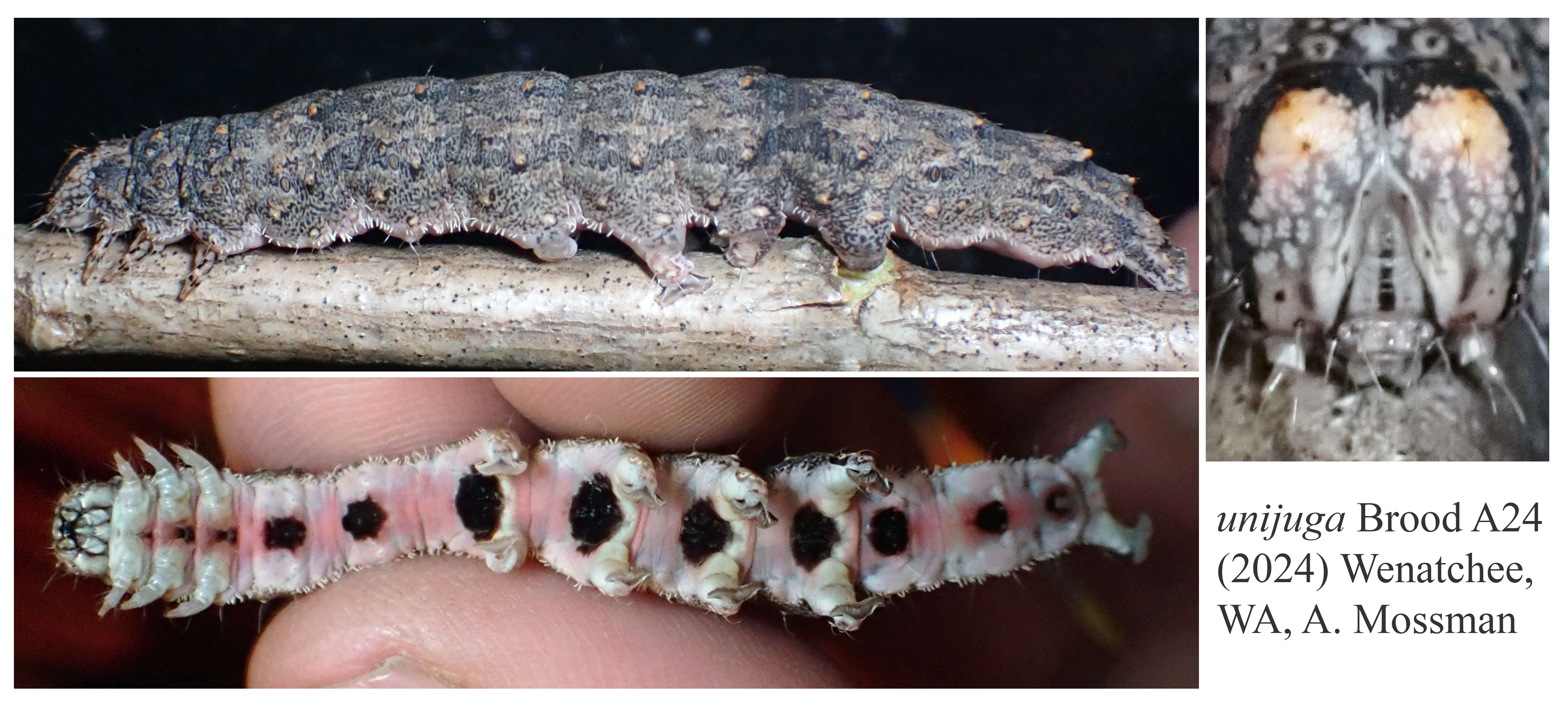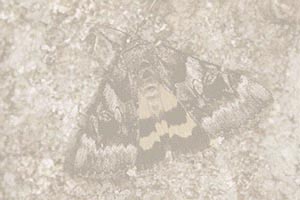 Catocala unijuga
Catocala unijuga
Walker, 1858
Larvae of unijuga can normally be separated from the several dozen
other Salicaceae-feeding species in North America (others separable include
relicta,
parta and the four
closely related
cara,
carissima,
amatrix and
concumbens).
Characteristics of unijuga include rumpled and rugose body, dark gray to grayish brown body
color, overlayed with
heavier thick speckles and banding (cf. stippled banding), dull orangish pinnacula
dorsolaterally; A5 patch slightly distinguished, with mild hump;
numerous but short lateral filaments; prominent wide black head capsule band (wider than in other
species) from
ocelli up sides and connecting over lobes, contrasting
with paler vertices with orangish hue;
frons with prominent dark vertical line (cf. absent or partial or more lightly
colored in others); venter with mauve shading (approaches ilia/umbrosa in intensity),
black spots on all segments, wide on A3-A6.
A frequent underwing in the north (along with relicta, semirelicta, briseis) and the
only species recorded to date from interior Alaska. Commonly feeds on Populus, including
P. deltoides and P. tremuloides.
(NOTE: the images of
semirelicta
in the 2011 Wagner et al. Owlet Caterpillars volume
are in fact
unijuga).



|


